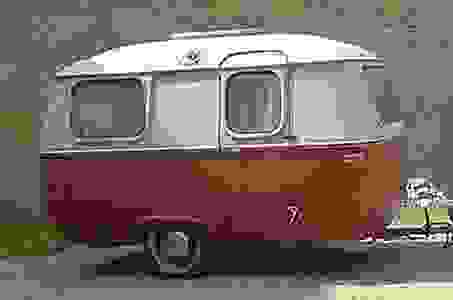Was the Boler trailer a European design?... Looks that way.
It is safe to say that over the past two centuries or more, European design and innovation has had a significant influence on western culture, be it through shared knowledge or shared skills by various means including immigration. No wonder then that European moulded fibreglass trailer designs, manufacturing processes, characteristics, and features made their way from Western and Central Europe over to North America in the late 1950s and early 1960s.
Perhaps not a coincidence then that all three Boler manufacturing partners, Ray Olecko, Sandor Dusa and Erwin Krieg, each pooled their resources together in 1968 to design and manufacture what would become a very popular Canadian lightweight travel trailer having very similar manufactured design features and characteristics of the earlier moulded fibreglass trailers of Europe. Whether or not the partners researched and obtained earlier blueprints or drawings from the United States & Europe remains a mystery.
The Canadian & American Boler
The Canadian & American Boler
The Canadian & American Boler

The 1961 European Karosa
The Canadian & American Boler
The Canadian & American Boler

The Boler was a new concept to Canada but not to other countries.
The Canadian Boler made a huge splash when it was first introduced to the North American market in 1968. Until then, 'tin and sticks' (a reference to aluminum trailers with heavy wooden under-framing) ruled the highways and campgrounds. Quite simply, no one in Canada had ever seen a lightweight fibreglass camper trailer until Ray Olecko brilliantly introduced one to a very enthusiastic market. However, long before the Boler arrived on the North American scene in 1968, lightweight fibreglass egg shaped camper trailers were popular in countries such as the United States, Australia, Great Britain, South Africa, Holland, Germany and other countries.
The fibreglass building concept of making two fibreglass shells, top and bottom, and placing them together to form a trailer body was not a new concept at the time of boler having origins going back as far as the mid-1950s.
Design concepts such as a dinette table that folds down to make a bed, small counter with sink and propane burner stove top, small refrigerator, overhead cupboard storage, a front seating area, all were previous European innovations and design elements long before the Boler.
It can be reasoned that the Boler was never patented in 1968 because too many of its design elements and manufacturing practices were already evident in several other earlier known fibreglass trailer models including the Airstream moulded fibreglass camper of 1955 which can be credited as one of the very first North American examples of moulded fibreglass trailer design.
Could the 1961 Karosa have been a blueprint for the boler?
Boler's European heritage was noted in 1979
Fibreglass trailers of the world earlier than the Boler

Early Airstream fiberglass moulded trailer of Danish design
More than a decade earlier than boler, Airstream U.S.A. developed a moulded fiberglass camper.
Research evidence indicates that Boler Manufacturing Ltd. of Winnipeg wasn't the very first North American trailer manufacturer to design an aerodynamically shaped camping trailer made in two-half shells of moulded fibreglass. This credit would go to Airstream of the United States with the help of Danish engineering.
*Airstream founder Wally Byam was a design pioneer, always searching for ways to improve his creations. During the early 1950s, Wally experimented with fiberglass in the hopes of developing a less expensive, lightweight option to his familiar aluminum travel trailers. Much of the credit for putting fiberglass on Wally’s radar goes to Marius Hansen, a Danish engineer who had extensive experience with fiberglass. Hansen was a painter and a sculptor who had a sideline in commercial fiberglass.
While his first efforts fizzled, Wally continued kicking around ideas for a fresh design. Instead of trying to mimic the familiar Airstream look, the new prototype was smaller and aimed at weekend campers. Nicknamed the “Wally Bee” and formed from two molded pieces – an upper and lower section – the prototype was built sometime in the mid- to late-fifties. What is certain is that the Wally bee suffered the same cost-effective fate as Airstream’s earlier efforts. Ultimately his designs weren’t cost-effective and didn’t gain traction, but Wally’s ideas were some of the travel trailer industry’s first fiberglass designs. He may very well have paved the way for fiberglass RV development in the years that followed.
(*courtesy of airstream.com)
Much like boler the U.S. Cloud trailer of Minnesota (circa 1961) borrowed European design.
Official Boler History Preservation Website Of
Counting Bolers Facebook Group
& Planet Bolerama RV Trailer Group
The Offical Boler History Preservation Website